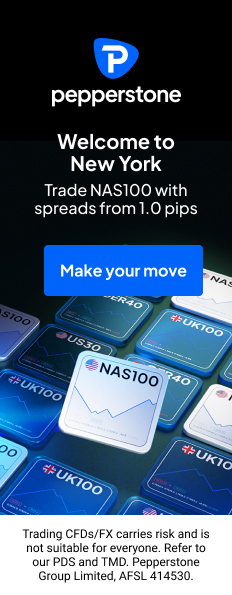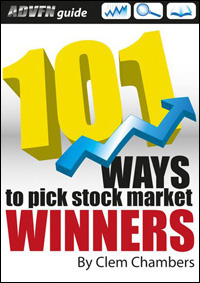Numerous industries make up the healthcare system, ranging from infirmaries to health insurers and from gear to pharmaceuticals. And since everybody relies on healthcare at some point in life, this segment brings about numerous opportunities for investors to take advantage of.

The healthcare sector fetches trillions of dollars worldwide, and with its constant and considerable growth – much more significant compared to many countries’ overall economies – the capital funnelled into the sector is only bound to increase. All this expansion opens the room for profits for shrewd and dedicated investors. Noteworthy, largely, medtech stocks have overtaken the S&P 500 in time. It’s only the technology sector that has long led the pack. However, the tech industry is as well closely connected to the healthcare sector. The medical technology industry, shortened medtech, consists of companies that create, design, manufacture, and vend medical gear, tech, and healthcare data systems. And it has emerged as a $587BN-worth industry in 2024, with the CAGR rising by 8.3% from 2019 to 2023.
If you want to invest in healthcare stocks, ensure you conduct your due diligence before leaping. This advice applies to anything you’d look to pour money into, from commodities to digital currency to mutual funds. This being said, here’s a checklist of the most valuable pointers that may serve you well in your investment decision-making in the vibrant healthcare and medtech industries.
Positive and negative trends
Determining what healthcare company is worth your investment boils down to drawing the line between the worthy and worthless trends. These trends’ continuance, stagnancy, or alterations may impact numerous segments within the healthcare sector. These trends usually have the power to influence investment decisions. For instance, medical negligence remains a critical concern in the industry, being a risk factor. It can sway investors’ opinions – as the rest of the trends below do. If you’ve ever wondered what occurs to patients who receive wrong or inadequate treatment and care, it might be high time you answered your questions. To help you out, we’re recommending starting with online guides from reputable organizations in the law system, like Medical Negligence: What It Is and How It Occurs.
With that, here are the trends you can safely consider:
- Baby boomers and the aging population
- Diabetes and obesity pandemics
- Chronic disease patients
- Customized medicine
- Tech developments.
On another note, the trends that investors usually steer clear of include:
- Uncontrollable, spiking costs
- Single-payer, national health
- Uninsured population
More sorts of healthcare stocks
With such a comprehensive industry come numerous ramifications, and the healthcare sector makes no exception. Here are some of the leading types of healthcare stocks:
Pharmaceutical stocks
Bigwig pharmaceutical and drug manufacturers offer a wide range of diversified healthcare products and drugs. This sector has grown so much over the last twenty years that 2023 saw the industry fetch a whopping $1.5TN – a figure that competes with the GDPs of Australia, Mexico, and Spain. There are pharmaceutical and biotech companies, the former of which uses chemicals and the latter of which uses live organisms like enzymes or bacteria to produce drugs. The stock market ranges from bigwigs like Johnson & Johnson, with a market cap of 363.912BN at the writing time and with billions of dollars in sales, to small biotech businesses that have yet to release products in the market.
Many investors see pharmaceutical stocks as great defensive investments in today’s unpredictable economy, in part because the sector is impossible to collapse. A few pharmaceutical stocks generate substantial dividends, serving as a reliable income source that doubles as a hedge against inflation.
Medical gear stocks
With a CAGR growth approximated at 9.8% and a global gear market size that exceeds half a trillion at press time, medical device stocks are enjoying their fair share of popularity. This sector consists of medical equipment companies that develop the gear necessitated in patient care and treatment. The list of products is wide-ranging and consists of devices like artificial heart valves, smart thermometers, and automated surgical robots, among other millions of examples. A shocking figure? You bet so. The World Health Organization approximates the number of types of marketed medical devices to stand at 2MN. Noteworthy, the medical device stock market is ramified in medical equipment stocks and health tech stocks.
Here, you have, once again, options like Johnson & Johnson, as well as Abbott Laboratories, InMode, and Intuitive Surgical. The list is impressively extensive, so you’ll need a bit of research if you lack familiarity with the domain – as with any other category enlisted here.
Payer stocks
Payers like pharmacy benefit managers and health insurers play a critical role in the stock market – Statista estimates the global health insurance market to reach $2.50TN this year. Nevertheless, in 2023, the market was marked at $2.6TN.
Pharmacy benefit managers hand out prescription drug benefits for health plans and employers, while insurers take premium prices from employers and individuals to pay for healthcare costs.
Healthcare services stocks
A healthcare provider is an entity or person that offers medical treatment and care, including radiologists, midwives, doctors, stomatologists, and the list goes on.
There are clinics, hospitals, nursing homes, research establishments, long-term-care facilities, etc., funnelling weighty capital into the healthcare system and serving as a market pilar.
What to evaluate?
The most important thing to look at when vetting companies to invest in is the prospect growth. See how rapidly they generated revenue, how long they’ve been selling stocks, and what the strategies for expansion are, among others. Remember that the future isn’t a reflection of the past, though. To determine whether a targeted company’s strategy is valuable or not, you can check out their competitors’ growth plans to determine whether they sound better or worse.
Remember to do your due diligence and invest only what you can afford to lose, no matter what type of channel you choose.


 Hot Features
Hot Features













